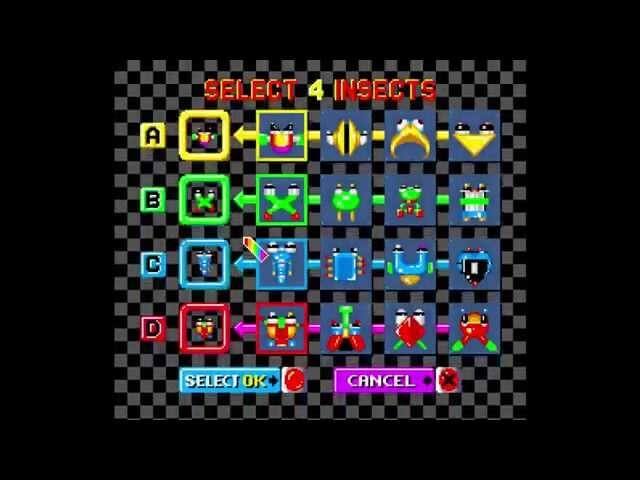A long lost Nintendo music game resurfaces for anyone to play

Welcome to our weekly open thread for the discussion of gaming plans, nagging questions, and whatever else we feel like talking about. No matter what the topic, we invite everyone in the comments to tell us: What Are You Playing This Weekend?
Earlier this week, the prototype of an unreleased Nintendo game made its way online. Sound Fantasy (which was to be the final name for a project developed as Sound Factory) was in development for the Super NES at Nintendo but never made it to store shelves. Last year, a cartridge containing an unfinished version of the game surfaced—followed by a second prototype last month—but it wasn’t until now that someone extracted the game files and threw them online. LuigiBlood, an active member of the game preservation and emulation community who’s been pursuing Sound Fantasy and reconstructing its history, helped facilitate the release but is not the owner of the prototype cartridge.
Sound Fantasy was the brainchild of Toshio Iwai, the artist who later partnered with Nintendo for Electroplankton and designed Yamaha’s Tenori-on. According to a profile in Wired, Iwai created a digital music toy called Music Insects while in residency at San Francisco’s Exploratorium. It presented visitors with a blank grid where various bugs were crawling around. You could draw on the grid with a method similar to the pencil tool in MS Paint, and when the bugs touched the pixel paths you left behind, they’d emit a sound that was determined by the color of your drawing and the shape of the critter crossing it. Someone at Nintendo played the installation and subsequently recruited Iwai (who had game design experience with 1987’s Otocky, a musical shoot-’em-up that was ahead of its time) to develop a version that worked with the Super NES and its mouse.
It’s evident from the prototype and various press materials released during development that Sound Fantasy became more than just a Music Insects adaptation. It was to include four musical games and toys. Music Insects was renamed “Pix Quartet” and remained unchanged outside of a few streamlining additions, like the ability to spray out a cluster of randomly colored dots. There are four colors of bugs, each representing a different family of sounds, with four distinct variations within. When you factor in all the different tones and pitches you can create with the spectrum of drawing colors, “Pix Quartet” turns out to be a complex little tool. It’s difficult to program a song of your own, but the prototype includes some fun samples from the developers. You can see all of them in the video embedded above, but there’s nothing quite like booting this up and fiddling with it yourself. It’s an endearing, playful way of marrying music and visual art, exactly the kind of thing you’d expect to see Nintendo champion.
Sound Fantasy’s other modes are more simple. “Star Fly” is a cutesy grid-based sequencer with a trio of music box-inspired tones. The mouse cursor takes the shape of a firefly with a magic wand, and each click lights up a star in the night sky that represents a note in your song. “Beat Hopper” is the most game-like mode in the prototype. You control a grasshopper who’s constantly bouncing on a pogo stick. The music starts playing once you land on and start chipping away at the collection of colored squares on each level. If you screw up, the music stops, and you hear a demoralizing groan. It’s a simple concept, but the way it controls is disorienting. It’s designed to respond to the mouse as if you were controlling the movement of the bug, but in reality, the bug never leaves the center of the screen. You move the background around underneath him. It’s not good.
The fourth Sound Fantasy mode, called “Ice Sweeper,” isn’t available in this prototype. Judging by a video that surfaced of Toshio Iwai himself playing the game’s final version, it was to be a musical interpretation of Breakout. That footage, originally uploaded to 1UP.com (RIP), is embedded below. In it, Iwai runs through all of Sound Fantasy’s modes and shows off some incredible “Pix Quartet” creations.
For whatever reason, Nintendo abandoned the game, but the story of Iwai’s Music Insects (or “Pix Quartet”) wasn’t over. As reported in that Wired profile, some developers from Maxis, the famous studio behind SimCity and all those other Sim games, were also taken by Iwai’s original Exploratorium installation. They partnered with the artist and turned Music Insects into SimTunes, which was released for PCs in 1996. The core of Iwai’s original vision is intact, albeit greatly expanded. SimTunes has 48 musical bugs where “Pix Quartet” only sported 16. You can find all sorts of SimTunes creations on YouTube (here’s the theme song from Doug, for example), but my favorite is the “Misirlou”-inspired “Surfin’ USSR,” which came built into the game.
According to LuigiBlood, the owner of the cartridge wishes to remain anonymous and spent “around $7,000” to make this release a possibility. Whoever they are, they and LuigiBlood deserve thanks for helping to preserve and expose this piece of video game history. We’ll probably never know why Nintendo cancelled Sound Fantasy, nor is it likely that the public will ever be able to play the final version, but at least now we can add some more material to the legacy of Toshio Iwai, an extraordinary artist and thinker.